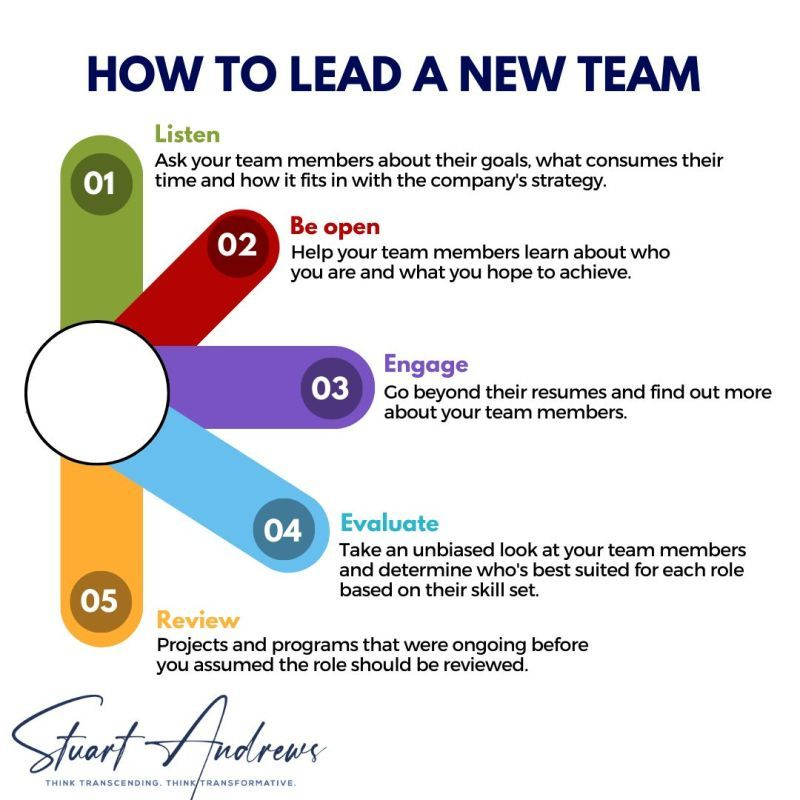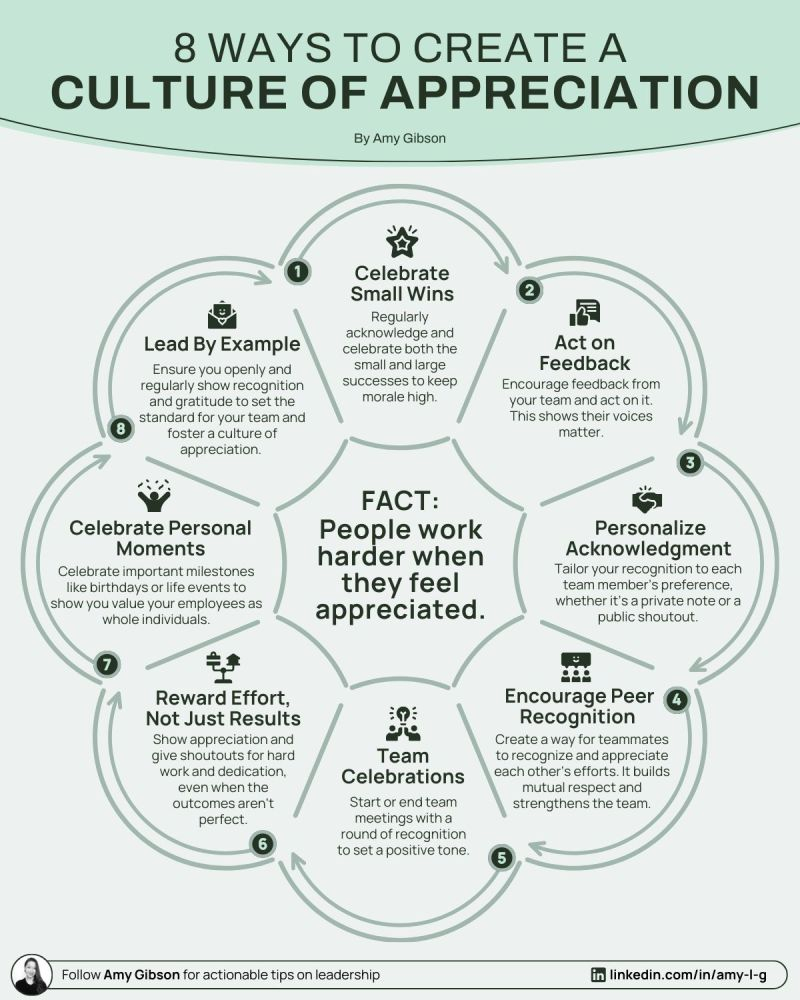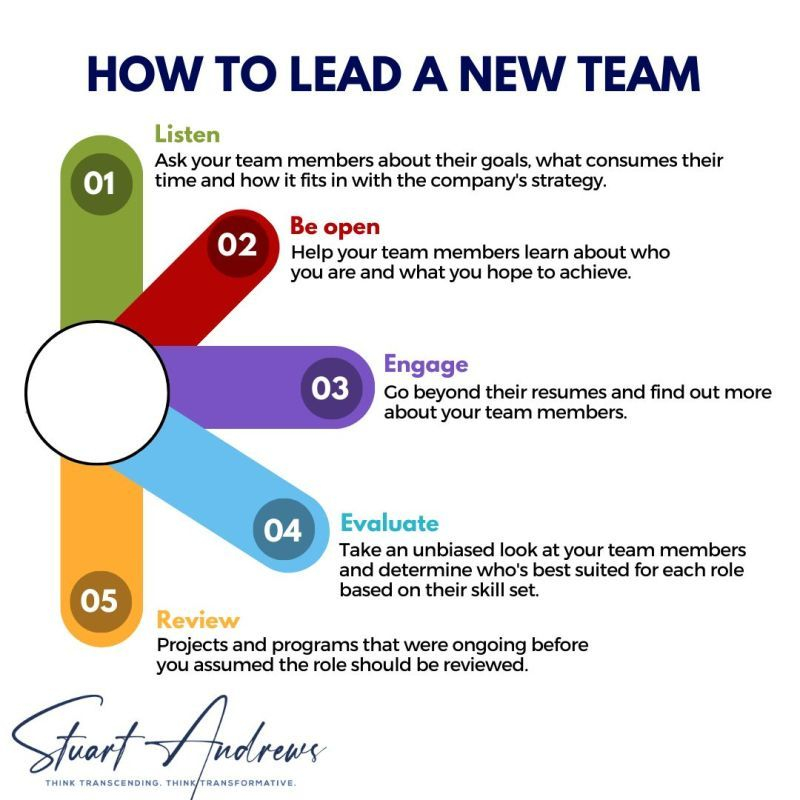"Do you do this when leading a new team?
Leading a new team can be a challenging task, but with the right approach, it is possible to successfully guide a team towards achieving its goals.
Here are few key strategies for successfully leading a new team:
Listen: Ask your team members about their goals, what consumes their time and how it fits in with the company's strategy. Set measurable objectives and communicate them to the team in a way that is easy to understand.
Be open: Help your team members learn about who you are and what you hope to achieve. Building trust and open communication channels are essential for a new team.
Engage with them: Go beyond their resumes and find out more about your team members.
Evaluate: Take an unbiased look at your team members and determine who's best suited for each role based on their skill set.
Review: Projects and programs that were ongoing before you assumed the role should be reviewed.
By following these strategies, leaders can successfully guide a new team towards becoming a high-performing unit."
Leading a new team can be a challenging task, but with the right approach, it is possible to successfully guide a team towards achieving its goals.
Here are few key strategies for successfully leading a new team:
Listen: Ask your team members about their goals, what consumes their time and how it fits in with the company's strategy. Set measurable objectives and communicate them to the team in a way that is easy to understand.
Be open: Help your team members learn about who you are and what you hope to achieve. Building trust and open communication channels are essential for a new team.
Engage with them: Go beyond their resumes and find out more about your team members.
Evaluate: Take an unbiased look at your team members and determine who's best suited for each role based on their skill set.
Review: Projects and programs that were ongoing before you assumed the role should be reviewed.
By following these strategies, leaders can successfully guide a new team towards becoming a high-performing unit."
"Do you do this when leading a new team?🤝
Leading a new team can be a challenging task, but with the right approach, it is possible to successfully guide a team towards achieving its goals.
Here are few key strategies for successfully leading a new team:👇
👉 Listen: Ask your team members about their goals, what consumes their time and how it fits in with the company's strategy. Set measurable objectives and communicate them to the team in a way that is easy to understand.
👉 Be open: Help your team members learn about who you are and what you hope to achieve. Building trust and open communication channels are essential for a new team.
👉 Engage with them: Go beyond their resumes and find out more about your team members.
👉 Evaluate: Take an unbiased look at your team members and determine who's best suited for each role based on their skill set.
👉 Review: Projects and programs that were ongoing before you assumed the role should be reviewed.
By following these strategies, leaders can successfully guide a new team towards becoming a high-performing unit."
0 Commentaires
0 Parts
521 Vue
0 Aperçu








